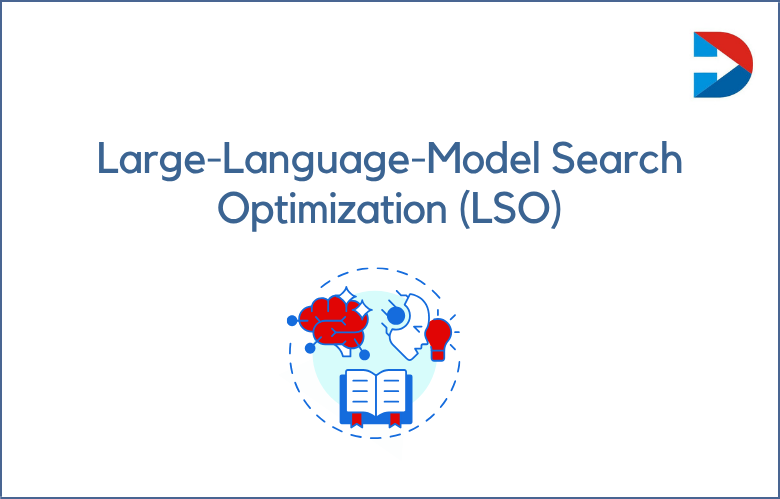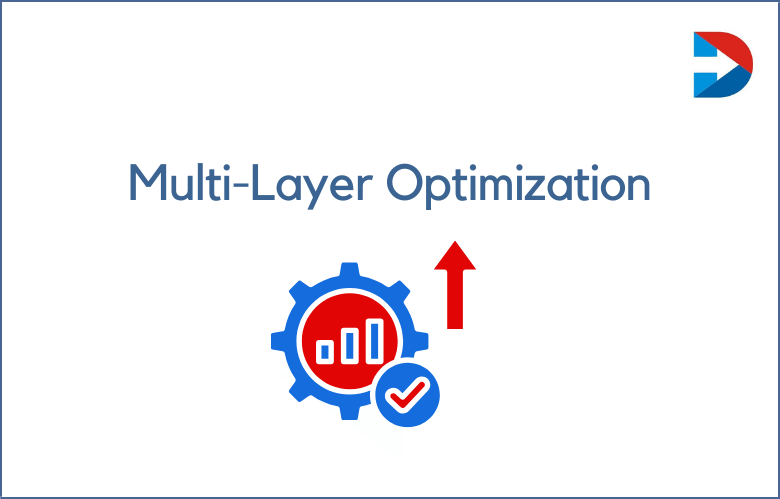
Emotional branding is an approach that focuses on connecting with customers on an emotional level, leading to stronger brand affinity and customer loyalty.
It’s more than just designing an attractive logo or slogan; it’s about creating a meaningful relationship between the brand and its customers.
We will explore emotional branding and how it can be used to connect with customers and promote long-term relationships.
A brand’s success is no longer solely dependent on its product or service offerings; instead, it increasingly rests on its ability to connect with consumers on an emotional level.
Emotional branding is a powerful tool that can evoke feelings, memories, or emotions in a customer’s mind and make them feel more connected to a brand.
In today’s competitive world, retaining customers over a lifetime is becoming increasingly challenging; therefore, brands are adopting emotional branding strategies to enhance customer loyalty and advocacy.
What is the psychology behind emotional branding, and how do you apply it to your Business?
Emotional branding is a marketing strategy designed to connect customers emotionally with a brand. The idea is to create an emotional attachment to a brand so that customers become loyal and repeat buyers.
To achieve this, businesses focus more on the psychology behind branding to ensure their brand is associated with positive feelings, emotions, and customer experiences.
One of the fundamental principles of emotional branding is understanding the connection between emotions and decision-making.
Decision-making is heavily influenced by feelings, which can sometimes override logical thinking. Therefore, emotional branding aims to create positive emotions that will result in customers choosing a particular brand over their competitors.
Brands that Nailed Emotional Branding: Lessons for Your Business
Emotional branding has emerged as a powerful marketing technique that appeals to customers’ emotions and establishes a deeper connection with them.
Brands successfully leveraging emotional branding have built strong brand loyalty and increased customer engagement. As a business, you can learn valuable lessons from these brands that have crafted a powerful emotional connection with their customers.
One brand that has nailed emotional branding is Coca-Cola. The beverage giant has connected with its customers on a deep emotional level through its ‘Share a Coke campaign.
The company created a personal connection with its customers by replacing the brand name on Coke bottles with famous names.
The campaign tapped into the universal human desire for recognition and acceptance, making customers feel notable for having their name on a Coke bottle.
This campaign was successful in increasing customer engagement and loyalty.
How Emotionally can branding drive customer loyalty and repeat business
There are several factors at work in emotional branding. First, effective emotional branding creates a strong connection between the customer and the brand.
This connection can be based on shared values, personality traits, or a common experience that resonates with the customer.
Emotionally engaged customers are likelier to become loyal brand advocates, recommending the brand to friends and family.
Second, emotional branding can create a sense of community among customers. The brand can become a part of the customer’s identity, and they may feel a sense of pride and belonging in being associated with it.
This community can lead to repeat business as customers return to the brand for shared experiences and a sense of belonging.
Third, by connecting with customers emotionally, emotional branding can create a sense of trust and authenticity.
Customers who feel emotionally connected to a brand are more likely to believe in and trust the brand’s promises and values, leading to long-term loyalty and repeat Business.
Tips for using Storytelling in Emotional Branding
There are a few key things to keep in mind when using storytelling as part of your emotional branding strategy:
Make sure Your Story is Authentic and Relatable
Customers can tell if you’re making things genuine, which is essential.
Use Emotion in Your Storytelling
Stories that evoke positive emotions (such as happiness, love, or excitement) are likelier to create an emotional connection with customers.
Keep Your Story focused.
Don’t cram too much information into your story – focus on one key message you want customers to remember.
Be consistent with Your Story across all Channels.
Customers should be able to hear the same level regardless of where they encounter your brand (e.g., on your website, in a commercial, etc.).
Examples of Emotional Branding through Storytelling
Many brands have successfully used storytelling as part of their emotional branding strategy. Here are a few examples:
Nike
Nike’s “Just Do It” slogan is one of the most iconic slogans in advertising history. The motto was born from a true story about an athlete who overcame adversity to achieve his goals.
Nike has used this slogan for years as part of their emotional branding strategy, and it has helped to make them one of the most successful brands in the world.
Coca-Cola
Coca-Cola has told stories since 1886, when they first introduced their “Santa Claus” campaign.
In recent years, they have continued to use storytelling as part of their emotional branding strategy with movements such as “Share a Coke” and “The World Is Ours.” These campaigns have helped to make Coca-Cola one of the most recognizable brands in the world.
Disney
Disney is a master at using storytelling in their marketing efforts. Their animated films are some of the most popular in history, and each one tells a unique and memorable story that helps to create an emotional connection with viewers.
Disney has also used storytelling in their theme parks, hotels, and other businesses, which has helped it become one of the most successful companies in the world.
What are the benefits of Emotional Branding for Your Marketing Strategy?
Increased Customer Loyalty
One of the primary benefits of emotional branding is that it can lead to increased customer loyalty. When customers feel a strong emotional connection to a brand, they are likelier to continue doing business with it and recommend it to others.
Greater Customer Engagement
Emotional branding can also lead to greater customer engagement. Customers who feel emotionally connected to a brand are more likely to interact with it on social media, write positive online reviews, and participate in other forms of marketing.
More Memorable Marketing Messages
Another benefit of emotional branding is that it can make your marketing messages more memorable. When customers react emotionally to your marketing, they are more likely to remember and share it with others.
Improved Customer Relationships
Emotional branding can also improve customer relationships. When customers feel positive about a brand, they are more likely to be satisfied with their purchase decisions and have a favorable view of the company.
Greater Brand Recognition
Emotional branding can also lead to greater brand recognition. Customers who react positively to your brand are more likely to remember and associate it with positive feelings. This can help you attract new customers and grow your Business.
Increased Sales
One of the ultimate goals of any marketing strategy is to increase sales, and emotional branding can help you achieve this goal.
Customers who have a positive emotional connection to your brand are more likely than those who don’t to make purchases from your company.
Improved ROI
Another benefit of emotional branding is that it can improve your return on investment (ROI).
Because emotional branding leads to increased sales and loyalty, you will see a greater return on your marketing investment than if you were using traditional marketing methods.
Reduced Advertising Costs
Because emotional branding leads to increased sales and loyalty, you can reduce your advertising costs over time.
As your customer base grows, you will need to spend less on advertising and promotion because your customers will already be familiar with your brand and more likely to make purchases without being prompted by advertising messages.
Increased Social Media Engagement
If you use emotional branding in your social media marketing, you may see increased customer engagement.
Customers who feel emotionally connected to your brand are more likely than those who don’t share your content on social media, write positive reviews, and participate in other forms of online marketing.
Creating an Emotional Branding Strategy: A Step-by-Step Guide
Creating an emotional branding strategy can be a powerful approach for differentiating your brand and connecting with customers on a deeper, more meaningful level.
Building strong emotional connections with your target audience can create lasting brand loyalty, advocacy, and trust.
If you’re looking to develop a moving branding strategy for your Business, follow these steps:
Understand your target audience and their needs
Before creating an emotional connection with your target audience, you must understand who they are and what they want.
Conduct market research to gain insights into their values, beliefs, and aspirations, as well as their pain points and challenges.
Use this data to create detailed buyer personas and map their customer journey. This will help you tailor your messaging and brand positioning to resonate with your target audience at every touchpoint.
Define your brand values.
Your brand values are the core beliefs that guide your Business and differentiate you from your competitors. They should reflect your target audience’s values while aligning with your business goals and vision.
Brainstorm a list of potential brand values and narrow them down to the ones that best resonate with your target audience and reflect your company’s mission.
Develop a brand personality.
Your brand personality is the human-like qualities that you want your brand to embody.
Think about the tone and voice you use in your marketing, the emotion you want to elicit from your customers, and the relationship you want with them.
Use your brand values and customer insights to develop a unique, consistent brand personality that will help you connect with your audience emotionally.
Craft your messaging
Once you clearly understand your target audience and brand personality, it’s time to create your messaging framework.
This should include your brand story, tagline, and messaging hierarchy. Your messaging should be consistent across all channels and reflect your brand values and personality.
Use emotional triggers in your marketing.
Emotional triggers invoke a response from your customer. Using emotional triggers in your marketing can create a connection with your audience and elicit the desired emotion.
Use storytelling, visuals, and other creative tactics to tap into your customer’s emotions and make your brand more relatable.
Measure the impact of your emotional branding.
To determine the success of your emotional branding strategy, you need to measure its impact. This can include metrics like customer sentiment, brand awareness, and customer lifetime value.
Use this data to refine your emotional branding strategy and improve your connection with your target audience.
Following these steps, you can create a powerful emotional branding strategy that resonates with your target audience and helps you differentiate your brand in a crowded marketplace.
With the right approach and a deep understanding of your customers, you can build lasting relationships and drive long-term growth for your Business.
How do you identify and use emotional triggers in your branding
Emotional triggers are the key to creating effective branding. By identifying and utilizing these triggers, you can connect with your audience on a deeper level and build a more robust, more loyal following.
We will discuss identifying and using emotional triggers in your branding to create a more impactful and successful brand.
Identify Your Brand Values
The first step in identifying your emotional triggers is to identify your brand values. These are the core principles and beliefs that your brand stands for.
Your values should align with the needs and desires of your target audience. Understanding what is essential to your audience can create a more relatable and impactful brand.
Define Your Brand Personality
Your brand personality is the set of characteristics and traits that define your brand. This includes everything from your tone of voice to your style of imagery.
Your personality should align with your values and resonate with your audience. Creating a unique and consistent character can establish a solid emotional connection with your audience.
Understand Your Audience
You must understand your audience to utilize emotional triggers in your branding effectively. This means knowing their desires, fears, motivations, and pain points.
By understanding what drives your audience and what they care about, you can create a more compelling brand that resonates with them on a deeper level.
Use Emotional Triggers in Your Messaging
Once you have identified your brand values, defined your brand personality, and understood your audience, it’s time to start using emotional triggers in your messaging.
This can include using emotional language, incorporating powerful imagery, and telling stories that resonate with your audience.
Create a Consistent Brand Experience
To ensure that your emotional triggers are practical, you must create a consistent brand experience across all touchpoints. This means using the same tone of voice, imagery, and messaging in your marketing materials.
In conclusion, emotional triggers are powerful for creating impactful and memorable branding.
By identifying your brand values and personality, understanding your audience, and using emotional triggers in your messaging, you can create a brand that resonates with your audience profoundly and emotionally.
Measuring the Success of Emotional Branding Campaigns
Emotional branding has been a game-changer in the world of marketing. It is now more critical than ever for brands to create a solid emotional connection with their target market. But how do we measure the success of dynamic branding campaigns?
One of the key metrics is engagement. Emotional branding campaigns should aim to elicit an emotional response from their audience, and engagement metrics such as likes, comments, and shares can measure this. Increased engagement can lead to increased brand loyalty and, ultimately, higher sales.
The future of Emotional Branding: Trends to Watch and apply in Your Business
As we move further into the digital age, the emotions that businesses evoke in their customers have become increasingly important.
Emotional branding has become an essential aspect of marketing, with companies seeking to create a unique and lasting bond with their consumers.
One trend that has emerged in emotional branding is the focus on creating an emotional connection through storytelling.
Consumers want to feel that they are part of a larger narrative and that their purchase is making a meaningful contribution to a broader cause or vision.
Brands that can effectively tell a story that resonates with customers are likelier to engage and retain their loyalty.
Another trend in emotional branding is integrating technology to create immersive experiences. Virtual and augmented reality tools are being used to create a more immersive and engaging customer experience.
These technologies allow businesses to create emotional connections with customers by offering them insights into the brand’s values, mission, and history in a previously impossible way.
Conclusion
Emotional branding is a powerful tool for brands looking to connect with their target audience. It requires creating an emotional connection between the brand and its customers through authenticity, elements, and a consistent message.
Emotional branding helps create ambassadors who genuinely believe in your product and would refer to friends and family through word of mouth.
Understanding the elements of emotional branding and measuring the progress with data is crucial to ensure success.
By harnessing emotion, your brand can stand out in an oversaturated market while promoting customer loyalty and long-term success.



